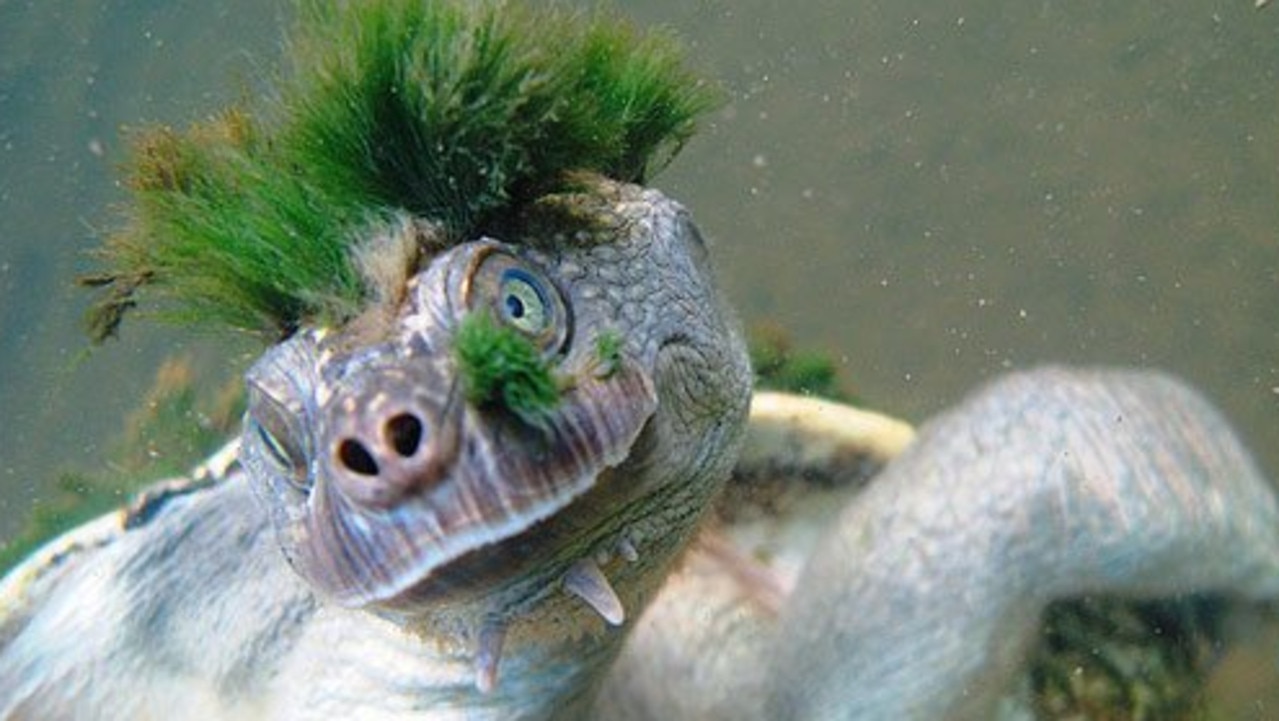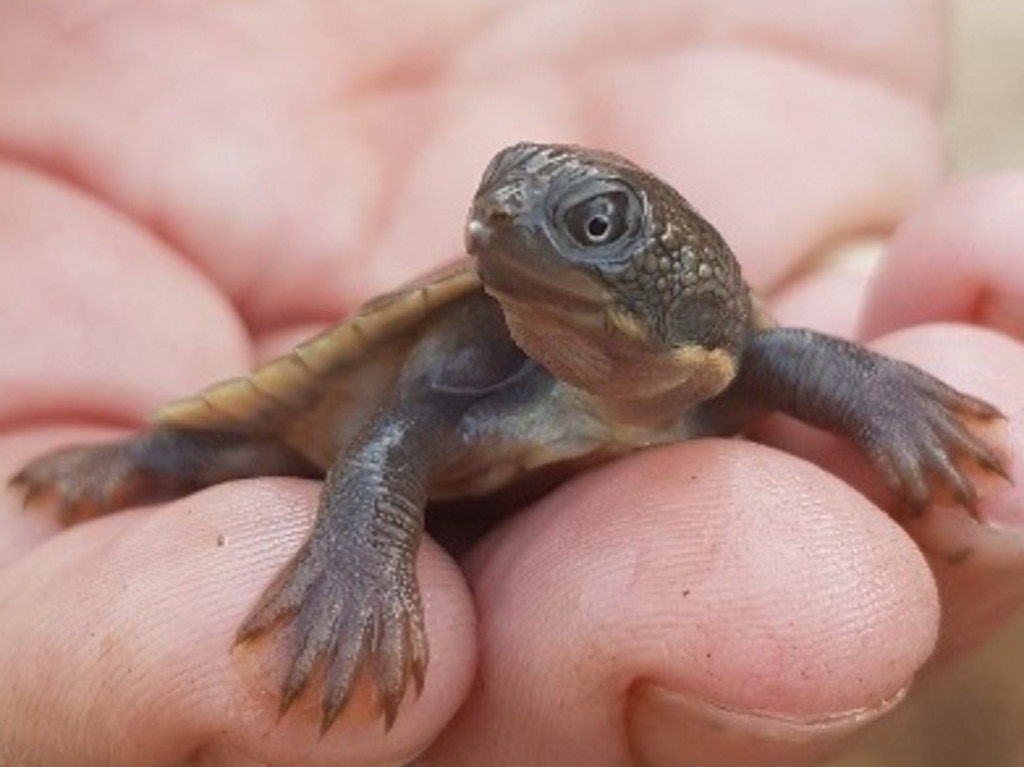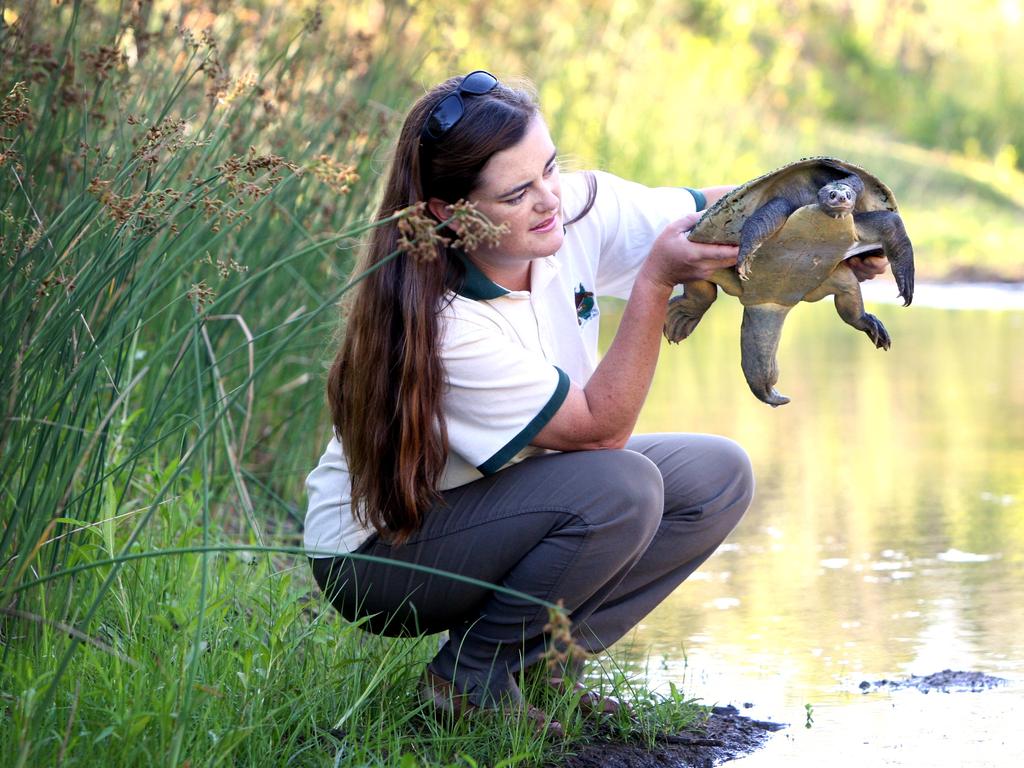Unknown animal of prey: theory behind missing Queensland turtles
Rare Mary River turtles in QLD are thought to be disappearing in concerning numbers after being swallowed by an unidentified predator as tracking tags move faster than the turtles can swim

READING LEVEL: GREEN
Experts fear Queensland’s rare Mary River turtles are being swallowed by an unknown predator*, leaving the aquatic* creatures in steep decline.
Also known as “bum-breathing turtles”, the species has been in decline for decades, with efforts to reduce the impact of animals of prey and ecosystem* changes dating back to the early 2000s.
Tiaro Landcare Group, which has investigated the species for years, fears the Mary River turtle is being eaten by a mystery predator.

Between 2015 and 2018, a field study on the population showed there was a very low number of immature* turtles residing in the Mary River, in southeast Queensland, particularly in the lower catchment*.
The Tiaro Landcare Group has been working with the Charles Darwin University to find out why.
“One strategy that we’re testing is to grow them until they’re about 10cm long then release these ‘headstarter’ turtles and then test them,” project leader Marilyn Connell said.

The turtles were equipped with tags to monitor their movements within the river and track their survival.
While analysis has not been completed, indications show the tags travelling faster in the water than speeds the species is capable of.
The pace of the tags has led to the conclusion that the turtles have been swallowed by a fast-moving predator, leaving the equipment inside their belly.

“So far, it’s not good news and we’re not sure what it is,” Ms Connell said.
Ms Connell said the turtles were not the only species in the Mary River with declining offspring*.
The lungfish, found in the Burnett, Mary and Brisbane rivers, the white-throated snapping turtle in the Fitzroy, Burnett and Mary rivers and the Mary River cod species were all being threatened by low maturity rates.

The Tiaro Landcare Group speculates* the mystery killer could be causing significant issues for multiple aquatic species in coastal rivers of eastern Australia.
The group is currently looking for partners to help investigate the identity of the predator and research solutions.
“We can’t decide what to do until we know what it is,” Ms Connell said.
Ms Connell encouraged locals to become a “turtle messenger” and care for the environment and river banks.

“Be proud of the creatures we’ve got in the river and help the next generation value and treasure them,” she said.
The group has worked on protecting the species since 2001 and together with Gympie, Fraser Coast and Sunshine Coast councils runs control programs for wild dogs and European red foxes during nesting seasons.
Ms Connell said the organisation’s program had been “quite successful”, with thousands of Mary River turtles hatched thanks to the program. It was expected that 90 to 100 per cent of hatchings would have failed otherwise, she said.
GLOSSARY
- predator: animal that naturally preys upon and eats other animals
- aquatic: happening in or connected with water
- ecosystem: plants, animals, other organisms, weather and landscape, working together
- immature: young, junior, juvenile, not yet fully grown to adulthood
- catchment: area where water is collected by the natural landscape
- offspring: the young of an animal or a person’s children
- speculates: form opinions about something without sufficient information
EXTRA READING
Turtle and croc strike up unlikely friendship
Australian turtles in serious peril from plastics
Hi-tech fake eggs helping to solve sea turtle crime
QUICK QUIZ
- Which species of turtle is thought to be being swallowed by an unknown predator?
- How long are “headstarter” turtles when they are released by researchers?
- These young turtles are equipped with what so researchers can monitor them?
- When did the Tiaro Landcare Group commence work on protecting the species?
- What percentage of Mary River turtle hatchings were expected to fail without the program?
LISTEN TO THIS STORY
CLASSROOM ACTIVITIES
1. What’s the evidence?
Write a list of the different pieces of evidence that have led the researchers to decide that the turtles are being eaten by a predator.
Time: allow 10 minutes to complete this activity
Curriculum Links: English; Science
2. Extension
What would you do to find out the identity of the mystery predator? Write a plan of action or steps that you think the scientists could take. Use information in the story and your research skills for information that will help you come up with your plan.
Time: allow 30 minutes to complete this activity
Curriculum Links: English; Science
VCOP ACTIVITY
Read this!
A headline on an article – or a title on your text – should capture the attention of the audience, telling them to read this now. So choosing the perfect words for a headline or title is very important.
Create three new headlines for the events that took place in this article. Remember, what you write and how you write it will set the pace for the whole text, so make sure it matches.
Read out your headlines to a partner and discuss what the article will be about based on the headline you created. Discuss the tone and mood you set in just your few, short words. Does it do the article justice? Will it capture the audience’s attention the way you hoped? Would you want to read more?
Consider how a headline or title is similar to using short, sharp sentences throughout your text. They can be just as important as complex ones. Go through the last text you wrote and highlight any short, sharp sentences that capture the audience.

